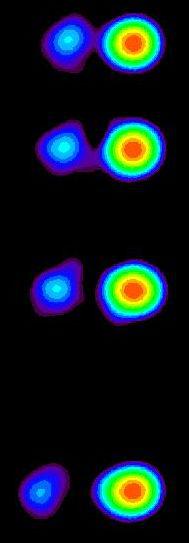How to Make a Baking Soda and Vinegar Rocket
Download Article
Download Article
Making a baking soda and vinegar rocket is a great idea for a science project, or a fun activity to do with a friend or family member at home. Start by assembling the body of the rocket complete with rocket fins. Use PVC pipe to make a sturdy, reusable launcher. Once you are ready for some action, head outside to an open area to launch your rocket.
Roll a 7 by 9 in (18 by 23 cm) piece of thin cardboard into a cone. Starting at the bottom right corner of the cardboard, roll the cardboard toward the left bottom corner. Make sure to roll it tightly. Roll it until a cone shape forms. Place duct tape around the end of the cone to secure it.
Use your hands to adjust the cardboard to get the perfect cone shape.Tape the cone to the bottom of a 20-ounce (591-mL) soda bottle. Place the bottom of the soda bottle in the cone. Tape the edges of the cone to the bottom of the bottle to hold it in place. Use 2 to 3 layers of tape to secure the cone to the bottom of the bottle.
If the cone is too large for the bottle, then trim the opening of the cone until it is just the right size.Add rocket fins to the bottle. Cut out a 5 by 6 in (13 by 15 cm) piece of cardboard. Fold the cardboard in half. Use scissors to cut a diagonal across the cardboard to make 2 triangles. Then cut the triangles in half to make 4 right triangles. Choose 3 to be the fins. Attach the fins to the bottle by:
Folding the long edge of each right triangle by inch (1.3 cm).Cutting 2 slits, 2 inches (5.1 cm) apart along the creased edge to make 3 tabs.Folding the middle tab backward.Taping each fins' tabs to the bottle using duct tape.Mark a spot 5 inches (13 cm) from the end of a PVC pipe. Use a permanent marker to do this. The mark will indicate where you need to cut the pipe.
Make sure the circumference of the pipe is large enough so that the top of the soda bottle can fit inside.You can purchase PVC pipe from your local hardware store.Place the opening of the bottle inside the PVC pipe. The cone side of the bottle should be pointed toward the ceiling at this point. Check to see that the opening of the bottle inside the PVC pipe is not touching the ground. The PVC pipe should be propping the bottle up off of the ground.
If the opening of the bottle is touching the ground, then you will need to cut a larger piece of PVC pipe.Fill half of the bottle with vinegar. Use white distilled vinegar. You may use any type of vinegar, but white vinegar makes less of a mess.
Make a baking soda packet. Place a heaping 1 tablespoon (15 ml) of baking soda in the center of a paper towel. Fold and roll the paper towel into a small packet. Make sure the baking soda is securely packed inside. Additionally, the packet should be small enough so it can fit inside the soda bottle.
The paper towel acts as a time release. This way, you will have enough time to step away from the rocket before it explodes.If the paper towel breaks, exposing the baking soda, then use a new paper towel.Add New Question
Can I use a lid with a hole in it?
Meredith Juncker is a PhD candidate in Biochemistry and Molecular Biology at Louisiana State University Health Sciences Center. Her studies are focused on proteins and neurodegenerative diseases.
This sounds like a great idea for my project. Will it work?

Meredith Juncker is a PhD candidate in Biochemistry and Molecular Biology at Louisiana State University Health Sciences Center. Her studies are focused on proteins and neurodegenerative diseases.
Support wikiHow by unlocking this expert answer.
Yes! Baking soda contains sodium bicarbonate (a base). When mixed with vinegar, which contains acetic acid, water and carbon dioxide will form. Because the cork has the bottle closed, the carbon dioxide will build up inside of the bottle. Once the pressure of the carbon dioxide builds and builds, eventually the cork or will fly off the bottle, allowing your "rocket" to fly.Does it matter what bottle you use?
Meredith Juncker is a PhD candidate in Biochemistry and Molecular Biology at Louisiana State University Health Sciences Center. Her studies are focused on proteins and neurodegenerative diseases.
Support wikiHow by unlocking this expert answer.
A glass bottle may be too heavy to fly into the air. If you use a bigger soda bottle (like a 2-liter instead of a 20-oz bottle), you will have to adjust the amount of baking soda and vinegar you add for your rocket to actually fly.See more answersThings You Will Need
Empty 20-ounce (591-mL) soda bottleThin cardboardDuct tapeScissorsPermanent markerPVC pipeHacksawWhite distilled vinegarPaper towelBaking sodaCork
This article was co-authored by Meredith Juncker, PhD. Meredith Juncker is a PhD candidate in Biochemistry and Molecular Biology at Louisiana State University Health Sciences Center. Her studies are focused on proteins and neurodegenerative diseases. This article has been viewed 956,701 times.
Updated: September 17, 2021
To make a baking soda and vinegar rocket, you'll need an empty plastic bottle, 3 pencils, duct tape, a cork, a paper towel, baking soda, and vinegar. First, use the duct tape to attach the pencils to the plastic bottle to make a stand for your rocket. Then, place 1 scoop of baking soda in the middle of the paper towel, and roll the paper towel up over it. Twist the ends to keep it secure. Next, pour the vinegar into the bottle until it's halfway full. Take your rocket outside to a wide-open area, drop the pack of baking soda into the bottle, and quickly close the bottle with the cork. Shake the rocket, stand it up on the ground, and stand back! Carbon dioxide gas will build up in the bottle until the pressure pops out the cork and sends your rocket flying. For more tips from our Science co-author, including how to fix your rocket if it doesn't explode, read on!
Thanks to all authors for creating a page that has been read 956,701 times.
"Thanks so much to the people who created this website, because it really helped. When I finished the rocket, it looked great. Thank you." ..." more
-
Latest
 Fastest Things in The Universe. Hello peoples we are again ...
Fastest Things in The Universe. Hello peoples we are again ...SCIENCE & SPACEFastest Things in The UniversePhoto by SpaceX on UnsplashHello peoples we are again here to tell you some refreshing and amazing articles today our topic is some of the most Fastest...
-
Next
 Blazing Speed: The Fastest Stuff in the Universe | Space
Blazing Speed: The Fastest Stuff in the Universe | SpaceSAN DIEGO -- If you're light, it's fairly easy to travel at your own speed -- that is to say 186,282 miles per second or 299,800 kilometers per second.But if you are matter, then it's another matter a...
Popular Articles
- Rocket Power (TV Series 1999–2004) - Rocket Power (TV Series ...
- technique - What is the definition of 'playing in the pocket ...
- "Pocket rockets," in poker Crossword Clue Answers, Crossword ...
- 5 Sex Toys Every Man Should Own, Use & Use Again - LA Weekly
- Pocket Holsters: 11 Options For Easy Everyday Carry (2021 ...
- What is Elton John's most successful song? (Celebrity Exclusive)
